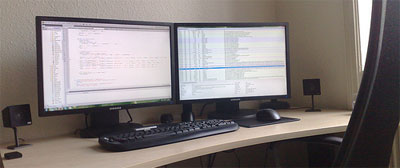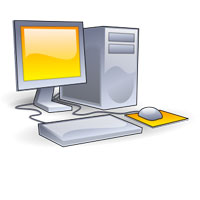They say that cleanliness is next to godliness, and you know that you want to be a tech god. So you should learn how to keep your PC as clean as possible; inside and out.
Cleaning Up Windows
The software and OS side of the cleaning equation basically consists of a few tasks: getting rid of useless files and programs, optimizing the registry, and making sure that everything is updated.
1. Get everything updated
OS, applications, device drivers, malware definitions, etc. — to the most recent possible version. This can be a big job, but Windows Update makes it a lot more automated — and if you have it turned on by default, you’ll probably have been updating all along. For third-party software, you may have to open the individual applications and look for a “Check for Updates” menu item — it will usually be in the Help section, or possible come up automatically when you start the program. Many applications (from Adobe Flash to Norton Antivirus) will be running in the background and checking automatically for updates, so you may not even need to worry about them.
2. Anti-Malware Software
If for some reason you DON’T have anti-malware software installed, this is a good time to start. I personally avoid Norton and McAfee, because in the past, I’ve had difficulty getting rid of them, and experienced notably slower PC performance when they were running in the background. Kapersky is a good “commerical” application, but I generally recommend AVG, AVAST and Trend Micro’s Cloud-based scanning.
3. Cleaning Applications
No matter what version of Windows you have (XP, Vista, Windows 7), Microsoft provides a number of useful applications. Before you start downloading and installing third-party software, you can get a head start by using the Free Up Disk Space tool, the Uninstall Software tool (which can also be accessed from the “More Optons” tab of the Free Up Disk Space dialog), and the Defragmenter (always do the Defrag after everything else, as other tasks may move some disk sectors around, undoing some of Defrag’s work). I wouldn’t recommend messing with the Registry unless you know what you’re doing, so we’ll avoid RegEdit for now.
4. Other Cleaners
Chances are you’ll want to investigate a more thorough “all-in-one” system cleaning application, and there are few better than CCleaner, the cloud-based Cloud System Booster, my go-to favorite Jet Clean and my new favorite, the crowd-sourced SlimCleaner. All of these will help you find and delete unnecessary files and registry entries, browser cookies, and more.
Physically Cleaning Your Hardware
Now onto the physical cleaning. NOTE: Whether you’re cleaning your monitor or your PC itself, unplug the power. I probably don’t even have to tell you this, but it’s better to be safe than 120 volts of sorry.
Cleaning Your Monitor
Monitor Screens have always been a touchy issue. For flat screens (LCD, LED, DLP, Plasma), there are two simple rules: never spray anything on the screen, not even pure water, and never use anything but a super-soft cloth (no paper towels, no t-shirts, no disposable wipes, etcetera).
For best results, use a dry microfiber cloth and use as little pressure on the screen as possible. If you have something on your screen that this doesn’t remove, you may use a solution of 1 part white vinegar to 1 part distilled water; dip the microfiber cloth into the solution quickly to make it just slightly damp. Keep a patch of the cloth dry or use a second cloth to wipe the dampened area of the screen as soon as possible.
What about the inside?

Cleaning your PC itself is not difficult, although how deeply you want to clean should be directly proportional to your comfort level with PC hardware. If you’re simply looking to make your PC look as shiny and new as possible, use a slightly moist lint-free cloth and rub to your heart’s content. Get a can of compressed air and spray it through any vents or openings. I like to open my DVD drives and spray them, as well as any exposed USB and other ports. Remember to keep the can of compressed air level, because aiming it downward will often let the liquid out rather than the air itself. And you may want to wrap a rag around the can, because it will get very cold during extended use.
I personally live in a very dusty environment, so I generally find myself using compressed air through the vents of my PC case about once a week. I build my own PCs, so I’m pretty familiar with the “guts.” Every six months or so I’ll take the case off and thoroughly spray all of the components within. If I’m feeling especially brave, I’ll actually remove as many of the components as possible (memory sticks, CPU, graphics cards, fans and ridged heatsinks, wire bundles, etcetera) and spray them and their respective motherboard slots individually with the compressed air. That’s also a good time to check on your CPU’s seating and replace the thermal compound if necessary. But like I said, if you’re not comfortable handling the guts of your PC, leave it to someone who is.
That’s all you really need to know about keeping your PC as clean as possible. If you’re really uncomfortable with any or all of these steps, hand the task over to someone whom you trust. But if these basic methods inspire you to dig a little deeper into keeping your PC cleaner and more optimized, there are any number of resources that will help you get into the nooks and crannies (physical and virtual). I heartily recommend Koroush Ghazi’s Tweakguides Tweaking Companion, for a thorough and step-by-step process of getting your PC to perform at its very best.

